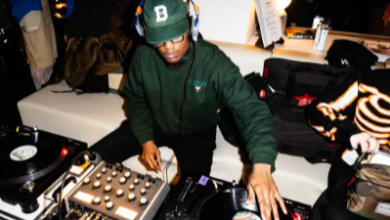How Mid-Career Professionals Can Use ATS Resume Tools to Stay Competitive

Introduction
The current job market is shifting rapidly as new technologies and updated hiring processes enter the marketplace. Automation, artificial intelligence (AI), and digital tools are now commonplace, and companies are regularly employing applicant tracking systems (ATS) as a gatekeeper to miss job applications before any human interactions take place.
This poses a unique challenge for mid-career professionals who have amassed years of professional experience but are typically not in an executive role. These individuals are now competing with younger candidates who have the benefit of being technology savvy and are likely to quickly learn the skills and be equally competent in their capabilities. Additionally, mid-career professionals are even more constrained because most of them already lead busy positions where they serve a significant obligation to their employer, and the amount of time they have to search for a job needs to be effective and efficient.
ATS software is a normal part of a hiring system now. Organizations use this software to scan and rank resumes primarily based on formatting and keyword searches. If a resume is not sufficiently optimized, it may never get to a hiring manager’s desk. Understanding of what an ATS does will help a mid-career professional understand how to best display themselves in a way that will differentiate them from paying too much attention to the design and movement of words on a page.
The following article will be helpful, as well as give some simple and practical guidance to:
- Write ATS-friendly resumes and cover letters
- Keep up with the specific skills and tools needed by employers
- Change careers easily while still working in their present role
With the right approach, mid-career professionals can stay competitive and take the next step in their careers with confidence.
The Evolving Landscape for Mid-Career Job Seekers
Mid-career professionals are experiencing a rapidly evolving job landscape fueled by automation, changing expectations from employers, and the impact of increased global competition. They are facing a host of challenges. Increased competition within job levels is of serious concern, particularly as companies continue to streamline their organizations and facilitate remote work that extends the talent pool beyond local geography. Complicating matters is the speedy upward movement of younger professionals who are penetrating a longer list of mid-career job opportunities.
Ageism, whether found in an overt or subtle form, is a serious factor. Employers may make assumptions that more senior candidates lack tech acumen and adaptability. As such, it is important for mid-career professionals to intentionally demonstrate their commitment to their learning and growth. Featuring certifications, training they may have recently engaged in, and discussing their awareness of current developments and trends in their industry can give potential employers countervailing information to the assumptions they may make about the candidate.
It is also crucial to translate your years of experience into language that appeals to modern job descriptions. Mid-career professionals must ensure that their résumés are ATS-ready by using the right keywords, quantifying their successes, and focusing on easily transferable skills and flexibility.
Time is another huge limitation. Most job seekers at mid-career levels are supporting demanding roles while searching for a new job, with little time for a thorough job search. To help you manage time, you can set instant job alerts, schedule specific times to apply, and use optimization and tracking tools for résumés and job applications, respectively.
Finally, many job seekers experience the aggravation of the resume black hole when they apply to a job without any feedback at all. Often, this is due to ATS filters, the number of applicants, and a few human reviews. To alleviate this, use keywords to tailor applications, leverage professional networks, and follow up with recruiters for visibility and awareness.
What Are Applicant Tracking Systems
The applicant system (ATS) is a software tool that helps in the management of appointment processes. It makes job applications, numbers and scans, resumes, jobs, interviews, and sends messages to the candidates.
The main features of ATS are included.
- Repetition: Information, skill, and experience, etc., attract the major details outside.
- Keyword Matching: How much good is combined with a résumé, with details.
- Candidate Ranking: First for the lains based on the basis of the sccoring applicants based on the basis of applicants.
- Progress inspection: To help the parties appointed by the candidates with a step-by-step approach.
Because ATS Software usually reviews your application, your resume is important. If it is not properly formed or correctly included, it should be rejected by itself; a man never sees it as a “Resume Black hole”. To avoid it, Job Seekers should do a resume and cleansing so that they can pass the ATS filter and get the real appointments.
How Mid-Career Professionals Can Leverage ATS Tools to Stay Competitive
If mid-career professionals know how to take advantage of Applicant Tracking Systems (ATS), they can get noticed. If you want to get past these systems, your resume has to have certain keywords, a clear and professional look, and content relevant to the job.
Keywords from the job description are your best friend. When reviewing the job description, look for skills, tools, or qualifications that are repeated and can fit into your resume naturally, especially in your summary, skills, and work experience. Also, remember to add both technical skills, such as “data analysis,” and soft skills such as “leadership.”
Your resume format should be clear and uncomplicated. Consider a single column with headings, like ‘Work Experience’ and ‘Education.’ Do not add any graphics, tables, or a fancy design. Use common fonts such as Arial or Calibri. Make sure to save your resume based on the job posting (as a Word document or PDF).
Again, avoid using descriptions of your duties, and include an achievement with the facts. For example, “increased customer retention by 25%,” or “management of $1 $1M project.” You can further emphasize your results by starting each bullet point with strong action verbs such as “Led”, “Created,” or “Reduced.”
Practical Steps for Mid-Career Professionals to Implement ATS Optimization
Dealing with Applicant Tracking Systems (ATS) can be tricky, but with some strategic thinking and actions, you can successfully maneuver through and maximize your chances. Here is a simple, step-by-step process to follow for mid-career professionals to optimize their resumes and secure interviews.
See Also: How Do Tech Companies Source Critical CPU Components?
Use a Trustworthy ATS Resume Checker:
Begin with a trusted ATS resume checker tool to see how an ATS will receive your application. These tools will reveal missing keywords, formatting errors, and discrepancies with job descriptions, and there are several options available that will provide keyword ideas, formatting verification, and specific improvement suggestions. A few common tools are called Jobscan, Resume Worded, and SkillSyncer.
Start with a Master Resume:
The starting point is one comprehensive document that contains all of your roles, accomplishments, skills, certifications, and measurable outcomes to be stored in one master format. This master will allow you to modify a resume quickly, as well as ensure you don’t forget any essential experience or qualifications.
Read Every Job Description Closely:
Work through each posting to extract key skills, required qualifications, and bigger picture terms used to describe both the nature and scope of the job. Identify the must-haves, then the nice-to-haves. You can use keyword tools or, even something simple like word counts for frequency, to help identify the words to think about including.
Personalize without Keyword Stuffing:
Use keywords effectively in your work history and accomplishments sections. Make sure the detailed and insightful examples of your accomplishments obviously relate to the job’s requirements, use action verbs, and contain specific results. Avoid repeating the same words too often, as it can feel strange to both the ATS and the potential employer.
Use Simple Formatting and Conventional Sections:
Use conventional section headings like “Work Experience,” “Skills,” and “Education.” Steer clear of tables, graphics, and images—this can confuse ATS software. Stick with simple font choices like Arial or Calibri to ensure readability and parsing ease.
Take Time to Proofread:
Spelling and grammar errors will negatively affect your chances of an interview, not only with recruiters but also with ATS software that may not capture misspelled keywords. Use spelling and grammar checkers, and ask a friend or colleague to help proofread for errors. Lastly, make sure you are consistent with layout and format, term usage, tense, and dates.
Conclusion
In today’s fast-moving and technology-driven job market, it is no longer just a choice to understand and utilize Applicant Tracking Systems (ATS). For mid-career professionals looking to enhance their competitiveness, it is particularly important. If you know where to look and how to incorporate relevant keywords, as well as tailor each resume to the particular role and keep the formatting clean and ATS-compatible, you can increase your chances of being noticed. With the right tools and processes in place, you can work around it, showcase your experience, and continue to move forward in your career. Learning how to adapt to the modern approach to hiring for your purpose is not merely about staying current. It is about staying ahead.




